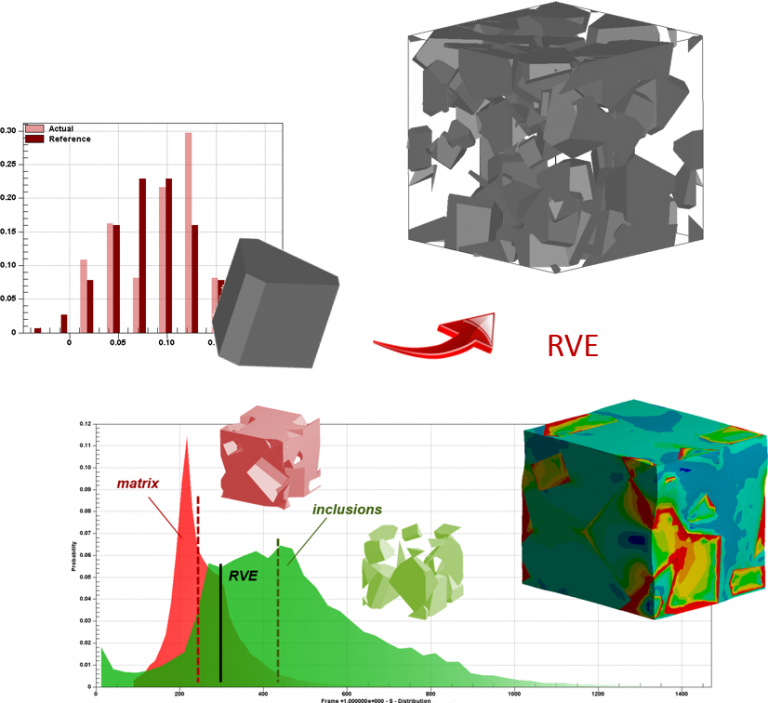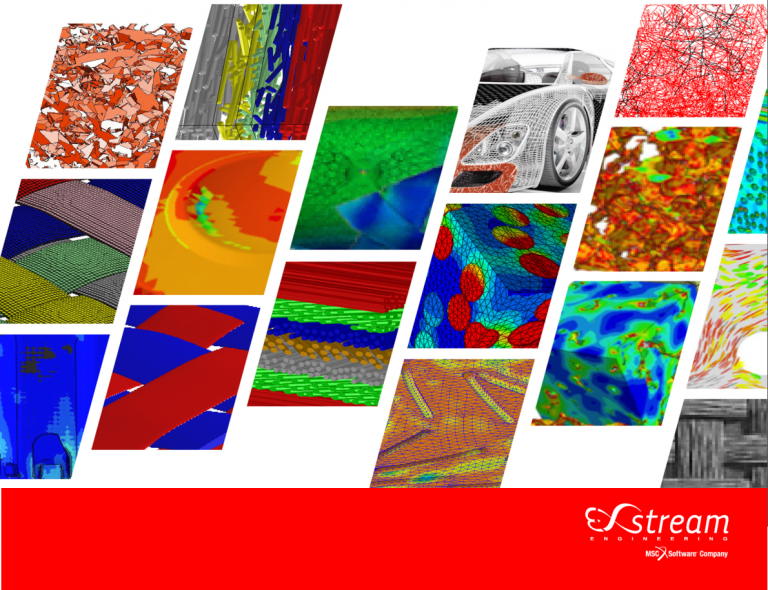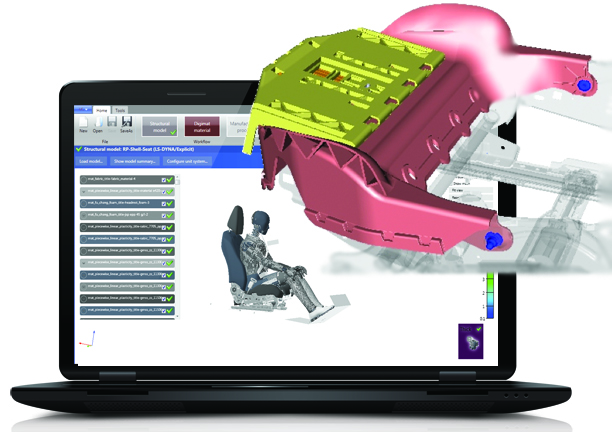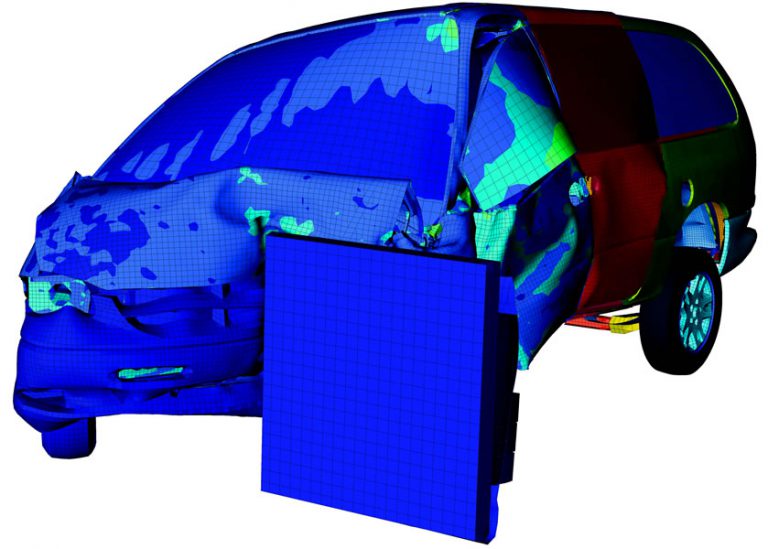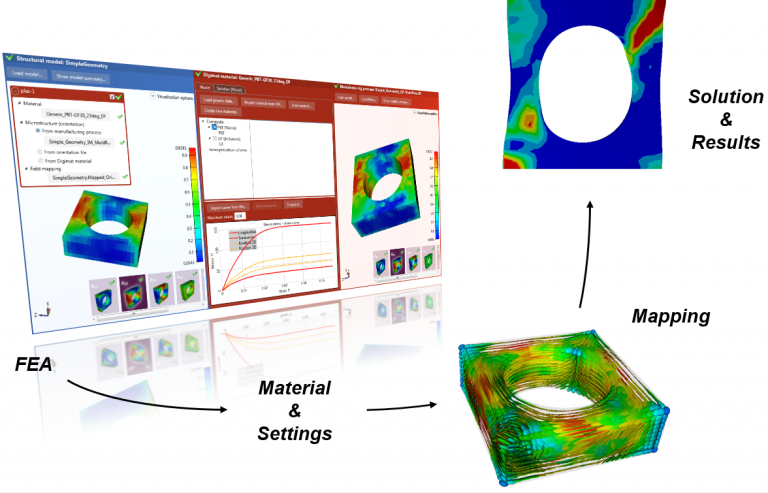FEA Based Composite Material Design and Optimization: Fatigue, Fracture, Impact, Crash, Acoustics and Vibration with Abaqus, Ansys, COMSOL and LS-DYNA
FEA & CFD Based Simulation Design Analysis Virtual prototyping MultiObjective Optimization
Composite material modeling Consultant, Training and Simulation services of Enteknograte cover wide range of industry using advanced FEA Technology for design, ultimate failure, fatigue, fracture, impact, crash, environmental degradation, acoustics and multiphysics simulations with sophisticated FEA solvers such as Abaqus, Ansys, LS-DYNA, RADIOSS, COMSOL and MSC MARC.
Finite Element Method and in general view, Simulation Driven Design is an efficient tool for development and simulation of Composite material models of Polymer Matrix Composites, Metal Matrix Composites, Ceramic Matrix Composites, Nanocomposite, Rubber and Elastomer Composites, woven Composite, honeycomb cores, reinforced concrete, soil, bones ,Discontinuous Fiber, UD Composit and various other heterogeneous materials.
Enteknograte engineering team can develop user defined constitutive equation and Procedure for Composite simulation as Plug-in as client preferred FEA Software or even individual software for special industrial and research application in engineering programming language environment such as Matlab, Python and Fortran.
Reverse Engineering in Composite Material Simulation
Material Engineering is the art of understanding composites in-depth, to innovate materials based on this knowledge and to follow a micromechanical approach to describe their real performance. In general, a direct engineering approach is used, meaning that per-phase properties of composite constituents are given directly in combination with microstructure information and composite properties are computed on that base and allows insight into materials and to systematically understand mechanisms that dominate the macroscopic material properties arising from the microscopic composition.
Material models must correlate to experimental behavior as closely as possible. For this purpose a reverse engineering procedure is used that results in the parametrization of micro-mechanical models and their adaption to a set of anisotropic material measurements to meet the global composite performance best possible.
Design structural parts with in depth knowledge about composite materials specificities in:
Mechanical properties for Composite Material Engineering
For all types of composite material, mechanical performances like Stiffness, Creep and relaxation, Strength and durability are computed by advanced FEA tools by using the Mean-Field homogenization technique to obtain:
• Stress-strain curve of the composite
• Creep and relaxation behavior of the composite
• Average stress and average strain
• Constituent of the composite
• Strength of the composite
• Viscous effects and coatings
• Decohesion at the fiber-matrix interface
Thermo-Mechanical properties for Composite Material
Enteknograte Engineering team include thermo-mechanical material properties as important part of Design Procedure using FEA based Simulation and Optimization to simulate thermo-mechanical performances of composite materials. For all types of composite material, thermo-mechanical performance, as thermal expansion and stiffness as function of the temperature, is computed with Finite Element Analysis using the Mean-Field homogenization technique. Enteknograte engineering team consultant and training service in thermo-mechanical simulation of materials include:
• Evolution of the stiffness matrix of the composite with the temperature
• Stress-strain curve of the composite for a given thermo-mechanical load
• Temperature Dependent Viscose effect
• Curing effect of Metal Matrix Composite
Electrical conductivity properties for Composite Material Engineering
Electrical conductivity plays an essential role in aerospace and electronic applications. Nanocomposite materials are used in this field to improve or to limit the electrical conductivity of some components. The electrical conductivity of the material is then driven by the amount of nano fillers and the distance between fillers. For all types of composite material, the electrical conductivity of the composite is computed by Finite Element Method by using the Mean-Field homogenization technique.
Stiffness and Strength properties for Composite Materials Structural Performance
The choice of technology of composite materials combined with numerical simulation allows to optimize the structures with respect to objectives in the best delay. One of the challenges for designers during the simulation is to take into account the specificity of these materials, i.e. their anisotropic behavior, resistance to fracture and their specific mechanism of damage. Enteknograte engineering teams consultant and training service in Stiffness and Strength simulation of materials include:
• predictive models based on the micro-structure of the material
• influence of the manufacturing process on the local mechanical behavior and stiffness
• material models for progressive failure analysis
• optimization of architecture of the composite of each component of the structure.
Application for Stiffness and Strength simulation of new material in the industry:
• Aerospace: Wings, panels, engine blades, nacelles, interior component, virtual material testing.
• Automotive: Chassis, wheels, connecting rods, full body systems, door, seat, dashboard, interior component, drivetrain component, underhood, oil cooler bracket, front-end carrier, virtual material testing.
• Biomedical: Prosthesis, implants.
• Energy: Pipes, vessel, valves, fan blade, wind turbines blade, pump body.
• Electronics: Connectors, clips, electronic racks and housing assemblies.
Modeling for Acoustics and Vibrations in Structural Engineering
NVH (Noise, Vibration, and Harshness) is one of the most often directly perceived quality traits of a product, and is therefore one of the most sought after targets for performance by the product development team to help differentiate themselves from competition. This requires fine modeling of local stiffness throughout the structure to accurately identify its vibrational behavior.
FEA based multi-scale modeling allow the our engineers to access to new micro-structural design parameters, for both reinforced plastics and UD, woven or braided composites for lightweight design with vibrational behavior identification. To optimize the material cost and weight of the structure, Enteknograte design team able to define the best percentage and the best orientation of fibers in the material directly in the design of components and the complete vehicle.
Enteknograte Noise and Vibration simulations include:
• Frequency response analysis
• Modal participation factor
• Normal mode analysis
• Random response analysis
• Transient response analysis
Application on Acoustics and Vibrations in the industry:
Aerospace & Defense: Cabin comfort, interior compartments, blade modal analysis, fluttering.
Automotive: Fan flaps, planetary gear sets, cam cover, front end carrier, pan oil, engine mounts.
Explicit Dynamic Analysis of Composite Material for Impact and Crash Studies
In the steady quest for lightweighting solutions, continuous carbon fiber composites are becoming more approachable for design, now not only used in the aerospace but also the automotive industries. Carbon Fiber Reinforced Plastics (CFRP) have been used for a long time in Aerospace for primary structure components and they are now being integrated into car body structures, used for their high stiffness and strength and low weight.
The material properties of composites structures (chopped or continuous fibers) are much more complex than metal, especially with respect to failure. FEA based Simulation and design allows to choose the correct failure modeling according to the type of micro-structure definition.
Enteknograte Engineers are very skilled in design of composite structural parts for crash and impact analysis using advanced finite element tools:
• Deformation and damage analysis
• Material failure predictions
• Drop and crushing testing
• High-speed and hypervelocity impacts
• Highly nonlinear, transient dynamic forces
• Explosive loading and forming
Application for Crash and Impact in the industry:
Aerospace and Defense: Bird strike, damage tolerance, ballistic impact, crashworthiness, ice impact.
Automotive: Front crash (full car), airbag deployment, side pole crash, pedestrian safety, hood/door slam, seat design, front end carrier, stone impact .
Electronics: Drop test.
Energy: Wind turbine blade stability, bird impact, pipe impact.
Fatigue & Durability Analysis of Composite Materials: Progressive failure simulation in composite parts for Structural Engineering toward Fatigue and Durability analysis.
One of the most challenging tasks of design and development process is prediction of failure over time. Without knowledge of how a structure might fail, it is harder to improve its safety performance. Durability analysis from finite element models is becoming increasingly accepted in the design process.
Fatigue modeling of chopped and continuous fiber polymer composites is challenging due to their anisotropic, heterogeneous and viscous material properties as well as their process-dependent microstructure. Enteknograte Engineers can model high cycle fatigue (HCF) of fiber reinforced composites using FEA tools Like VirtualLab Durability, nCode DesignLife and FE-SAFE.
What Enteknograte do with FEA Based Simulation Design in Composite Material Engineering:
- Multi-scale analyses to predict the nonlinear microstructure behavior of plastic & composite materials & structures
- Speeds up the development process for composite materials and structures
- Perform detailed analyses of materials on the microstructure level
- Derive microstructure material models suited for multi-scale coupling of the micro- and macroscopic level
- Bridges the gap between manufacturing and performance
- Understand Thermal, Thermo-Mechanical and Electrical behaviour of New Material
- Crash Performance simulation
- Fatigue and Creep assessment of Composite and New Material
- Acoustic and Vibration analysis before Manufacturing
- Stiffness and Strength properties
- Process simulation: Injection and compression molding, drape molding, RTM, etc.
- Industries: Aerospace, Automotive, Consumer Electronics, Material Suppliers, etc.
CAE softwares: MSC software (Digimat, Marc, Nastran), Abaqus, Altair, ANSYS, Autodesk Moldflow, LS-Dyna, PAM-CRASH, RADIOSS and SAMCEF.
Finite element simulation of woven fabric composites
Finite Element Simulation of Braided Composites
Unidirectional composites (UD) Simulation-Based Design
Discontinuous Fiber Composites: Finite Element Simulation
Hard Metal: Finite Element Simulation for Mechanical Properties on the Microstructural Level
FEA Based Simulation of Rubber Matrix Composite: Tires, anti-vibration systems, seals or hoses
Plastic materials: Thermoplastics (PA, PP, PC, POM, PPA) and Thermosets (Epoxy, Polyurethane) reinforced with short, long or continuous glass and/or carbon fibers
Composites Fatigue Finite Element Simulation
Finite Element Simulation of Crash Test and Crashworthiness with LS-Dyna, Abaqus and PAM-CRASH
Seat Design: Finite Element and CFD Simulation for Static & Dynamic Comfort, Whiplash, Acoustic & Thermal Comfort, Crash Test
Acoustics and Vibration: FEA and CFD for AeroAcoustics, VibroAcoustics and NVH Analysis
FEA Based Composite Material Design and Optimization: MSC Marc, Abaqus, Ansys, Digimat and LS-DYNA
Heat Transfer and Thermal Analysis: Fluid-Structure Interaction with Coupled CFD and Finite Element Based Simulation
Integrated Artificial Intelligence (AI) & Machine Learning - Deep Learning with CFD & FEA Simulation
Vibration Fatigue Finite Element Simulation: Time & Frequency Domain
eVTOL (Electric Vertical Take-Off and Landing) & UAM (Urban Air Mobility)
Finite Element Analysis of Durability and Fatigue Life
Additive Manufacturing and 3D Printing


